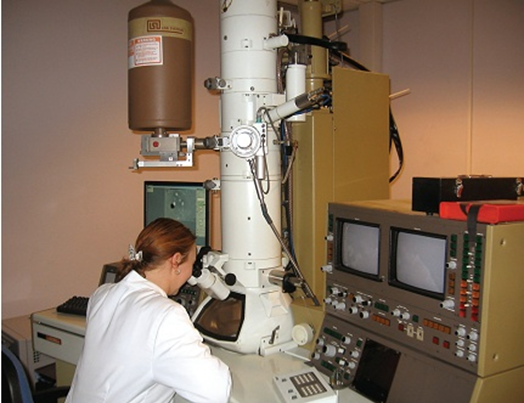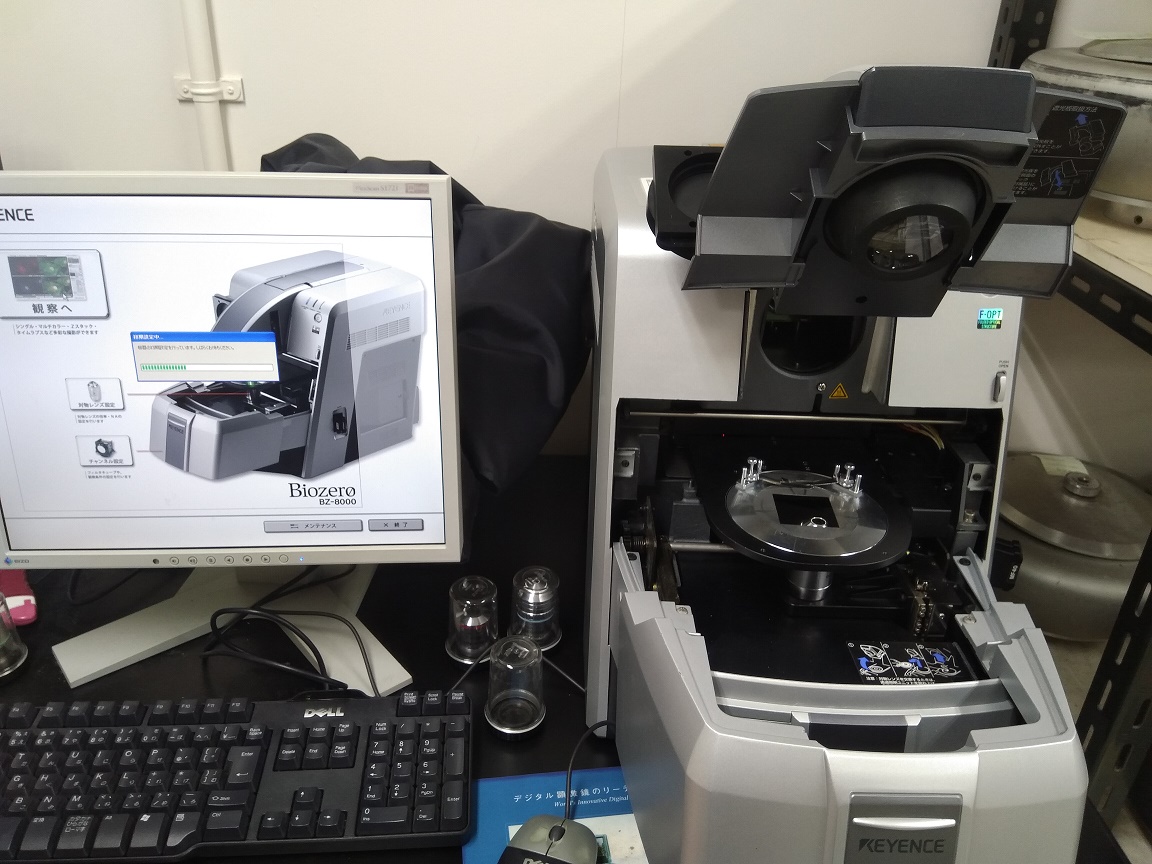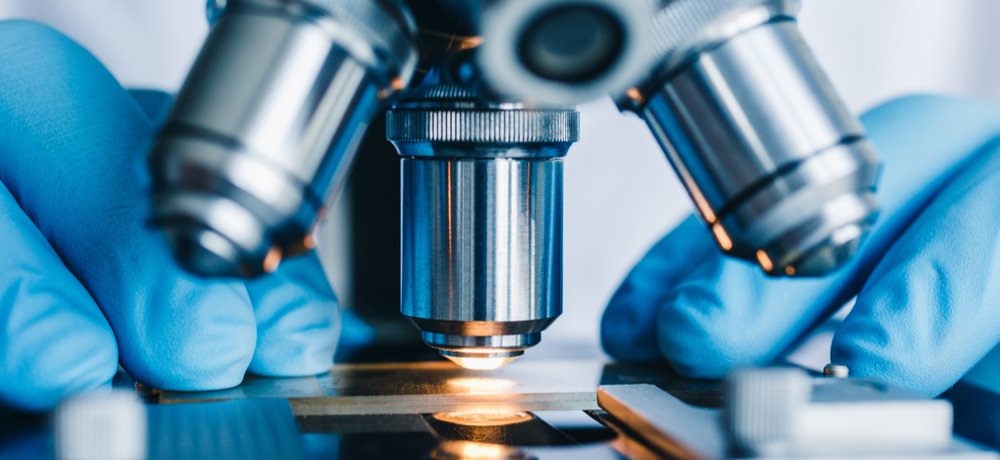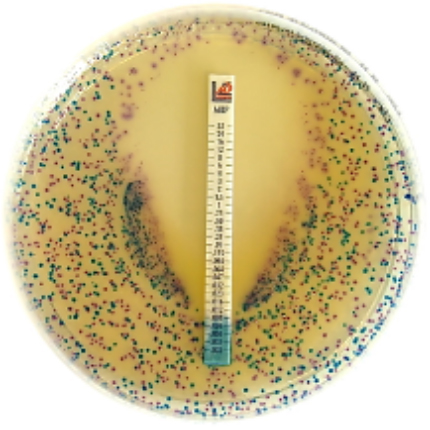There abound several numbers of microscopes that can be used by a microscopist to view specimens or samples and microorganisms in the laboratory. The choice of the microscope to be used is usually dependent on the task to be performed by the user and, on the type of specimen or microorganism to be investigated.
Normally, all the different types of microscope is geared towards serving the same purpose which is to magnify and make clear, small forms of life (i.e. microorganisms) which the normal human eyes cannot be seen.
Nevertheless, microscopes still vary in their technicality, choice, and function. Experience on the part of the user of a microscope is very important to getting a better result from their usage. This section describes the different types of microscopes used in the microbiology laboratory.
Compound light microscope
The compound light microscope makes use of visible light to illuminate the cell structure of microorganisms or specimens viewed with it. Compound light microscopes still remain one of the most versatile and available magnifying piece of equipment found in most academic and medical institutions.
They are usually fitted with a number of objective lenses and other supplementary lenses which help to magnify the images of specimens. In the compound light microscopes, the primary image of a specimen is formed first by the objective lens and then, it is enlarged by the ocular lens to produce the virtual or actual image. There are about four (4) different types of compound light microscopes that are widely available today.
The bright field microscope
The bright field microscope is the most commonly used microscope in the microbiology laboratory (both in the education and medical profession) for teaching purposes and in observations that are not too detailed. It is usually fitted with two objective lenses and two eye lenses that works together to produce an enlarged and clear image of an object or specimen being viewed with it. The bright field binocular microscope is limited in its usage in that it cannot observe living cells. It can only be used to view non-living (or dead) cells and stained specimens or microorganisms.
The bright field microscope forms a dark image of a specimen against a brighter background. Microorganisms must first be stained and fixed thereafter before in order to increase contrast and create variations in colour between the cell structures of organisms being viewed under the bright field microscope. Staining helps to improve contrast between the specimen and its surrounding environment when using the bright field microscope. This measure makes it easy to view cells or image of specimens whenever the bright field microscope is used.
The phase contrast microscope
The phase contrast microscope can be used to view living cells of microorganisms unlike the bright field microscope that lacks this ability. It allows microorganisms to be viewed directly without being stained (Note: staining distorts cell features and kills the organism eventually). Phase contrast microscope is widely used for studying eukaryotic cells and, the motility, shape, and cellular components (e.g. spores) of prokaryotic cells.
The working principle of the phase contrast microscope is based on the rationale that microbial cells differ in their refractive index; and this variation in cellular components allows some amount of the light passing through the cell to be refracted (or bent) and be magnified, thus making it possible for this microscope to make clear the image of unpigmented living cells. In phase contrast microscopy, a dark image is formed on a light background. Phase contrast microscopy is widely used in biomedical research because of its unique ability to observe wet preparations of living microorganisms.
The differential interference contrast microscope is a compound light microscope that is similar and works with the same principle of the phase contrast microscope. It can be used to observe the endospores, cell walls, vacuoles and other vital cell components of prokaryotic cells and even the nuclei of eukaryotic cells. Differential interference contrast microscope together with other newly developed microscopes such as the confocal scanning laser microscope and the atomic force microscope all detect and produce the images of living microorganisms or specimen being viewed under it in three dimensions.
The dark field microscope
The dark field microscope is also used to observe living unstained cells and microorganisms. It is a light microscope that is fitted with a modified condenser which allows the light reaching the specimen or cell being viewed to come only from one side. The specimen or cell is not illuminated directly, thus light comes from only one side; and this allows the light to be scattered or diffused by the specimen.
This makes the specimen or cell to appear light against a dark background. In dark field microscopy, only refracted light is used to form an image. Dark field microscopy allows living cells to be observed easily and more clearly than when the bright field microscope is used. Cell structures and features such as motility can be observed with this type of microscopy.
The fluorescence microscope
The fluorescence microscope (Figure 1) is used to observe living cells or microorganisms that fluoresces (i.e. organisms that emits coloured lights when light of a different colour is shown on it). Some microorganisms naturally contains substances that emits light in them while others (e.g. M. tuberculosis, E. coli) can emit light because they have been stained with a fluorescing or fluorescent dye.
Other microscopes (including the bright field, dark field and the phase contrast microscope) produce the image of a specimen or a cell by passing light through the specimen being viewed. But this is not the case for the fluorescence microscopy which is based on the light emitted by an organism.
In fluorescence microscopy, specimens are exposed to ultraviolet (UV) light and, the image is formed from the light emitted by the specimen or that coated on it. Fluorescence microscope has applications in the detection of antigen-antibody reactions, clinical diagnostics and microbial ecology.

Electron microscope
The electron microscope makes use of beams of electrons instead of a beam of light (as is the case in other types of microscopes previously described) to form or produce the image of living microorganisms. In electron microscopy, electromagnets instead of lenses are used to focus specimens or living organisms. Electron microscopes are large and expensive and, difficult to use unlike the other types of microscopes. They are usually fitted with internal cameras that produce the photographs of specimens or living cells being viewed with them.
Electron microscopes (whose components are enclosed in a tube that allows a complete vacuum) use electromagnetic lenses to form images from electrons that have passed through a thin section of the specimen or microbial cell. The electron microscopy has a very high resolution because electrons are known to have a short wavelength and, wavelength affects the resolving power of microscopes. Internal structures of both prokaryotic and eukaryotic cells together with viral cells and other microbial cells can be comfortably visualized by the use of electron microscopy.
An electron microscope has a resolving power that is much greater than the light microscopes – with a practical resolution that is about 1,000 times better than that of the light microscope. Electron microscopy allows microorganisms to be viewed at the molecular level that is not possible with the use of light microscope.It can magnify images of a specimen or object thousands of times smaller than a wavelength of light; thus, electron microscopy is useful for three-dimensional imaging of living cells or specimens.
Special training and techniques are required for specimen preparations prior to the usage of the electron microscope for viewing. Electron microscope is cumbersome and cannot be moved from one place to another as is applicable for other types of microscopes; and the electron microscope is usually coupled in a separate room where it can be used for microscopical analysis (Figure 2).
Transmission electron microscope (TEM)
The transmission electron microscope allow intact cells of microorganisms and their constituent cell structures to be observed directly by the use of a technique called negative staining (which reveals special structures such as capsules that surrounds a microbial cell).
In the use of TEM, thin sections of microorganisms must be prepared in order to allow for the proper viewing and imaging of internal structures of the even the smallest cell.
Negative staining allows easy study of the structure of viruses with the use of TEM. TEM is basically used to study the internal surfaces or features of cells and viruses.

Scanning electron microscopy (SEM)
The scanning electron microscope is used for the studying of the three-dimensional imaging of microorganisms and, it can also be used to examine the external surfaces of living cells unlike TEM which can be used to view internal surfaces or structures of living cells. SEM allows the external features of microorganisms (e.g. cell wall) to be observed even without the preparation of a thin section of the specimen or cell.
In SEM, the specimen or microorganisms is usually covered with a thin film of a heavy metal (e.g. gold or silver) which scatters electrons. The specimen is allowed to go through an electron beam scanning and, the scattered electrons emitted from the metal used for the coating or covering of the specimen are then collected. The collected electrons activate a viewing screen which allows the image produced to be seen.
A photograph of the image produced can also be obtained because SEM is fitted with an internal camera for this purpose. SEM is basically used to study the external surfaces or features of microorganisms in an excellent 3-dimensional pattern. Both TEM and SEM are used extensively in many current microbiological and biomedical researches.
REFERENCES
Beck R.W (2000). A chronology of microbiology in historical context. Washington, D.C.: ASM Press.
Cheesbrough, M (2006). District Laboratory Practice in Tropical countries Part I Cambridge
Chung K.T, Stevens Jr., S.E and Ferris D.H (1995). A chronology of events and pioneers of microbiology. SIM News, 45(1):3–13.
Dictionary of Microbiology and Molecular Biology, 3rd Edition. Paul Singleton and Diana Sainsbury. 2006, John Wiley & Sons Ltd. Canada.
Glick B.R and Pasternak J.J (2003). Molecular Biotechnology: Principles and Applications of Recombinant DNA. ASM Press, Washington DC, USA.
Goldman E and Green L.H (2008). Practical Handbook of Microbiology, Second Edition. CRC Press, Taylor and Francis Group, USA.
Madigan M.T., Martinko J.M., Dunlap P.V and Clark D.P (2009). Brock Biology of microorganisms. 12th edition. Pearson Benjamin Cummings Publishers. USA.
Nester E.W, Anderson D.G, Roberts C.E and Nester M.T (2009). Microbiology: A Human Perspective. Sixth edition. McGraw-Hill Companies, Inc, New York, USA.
Prescott L.M., Harley J.P and Klein D.A (2005). Microbiology. 6th ed. McGraw Hill Publishers, USA.
Willey J.M, Sherwood L.M and Woolverton C.J (2008). Harley and Klein’s Microbiology. 7th ed. McGraw-Hill Higher Education, USA.
Discover more from Microbiology Class
Subscribe to get the latest posts sent to your email.




